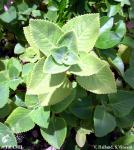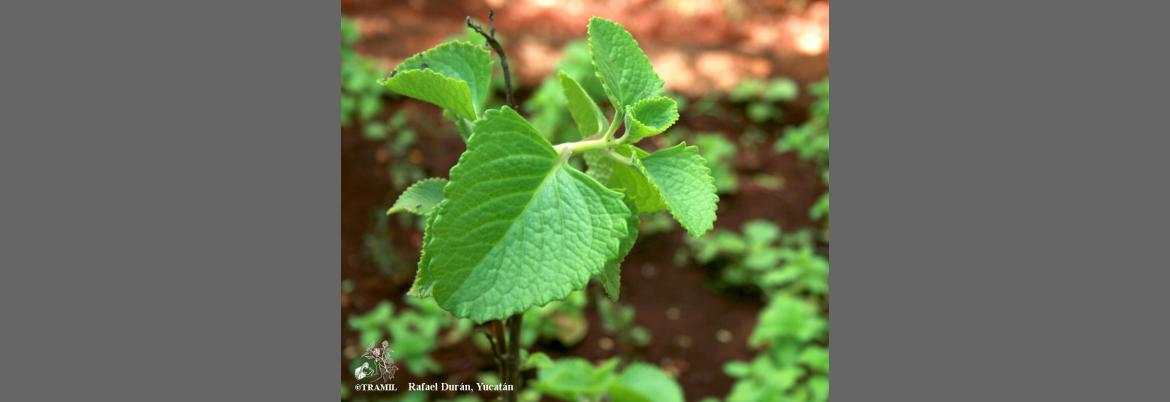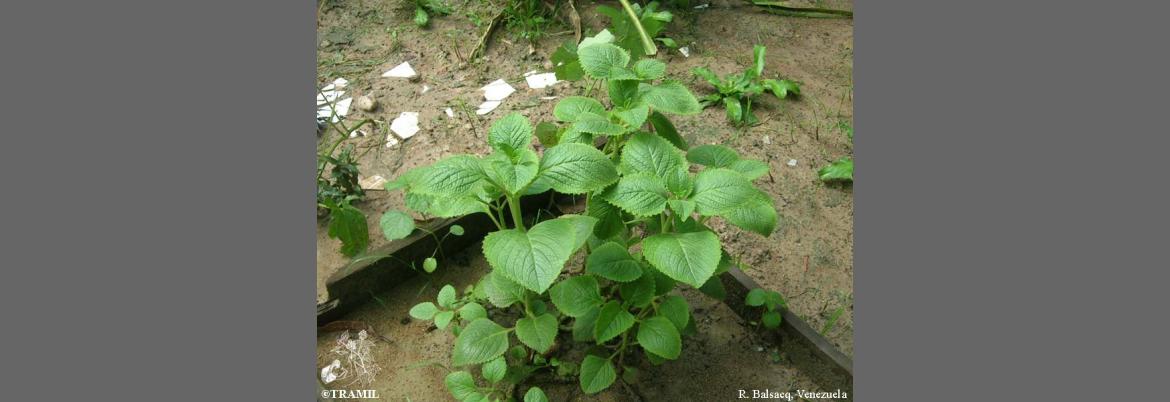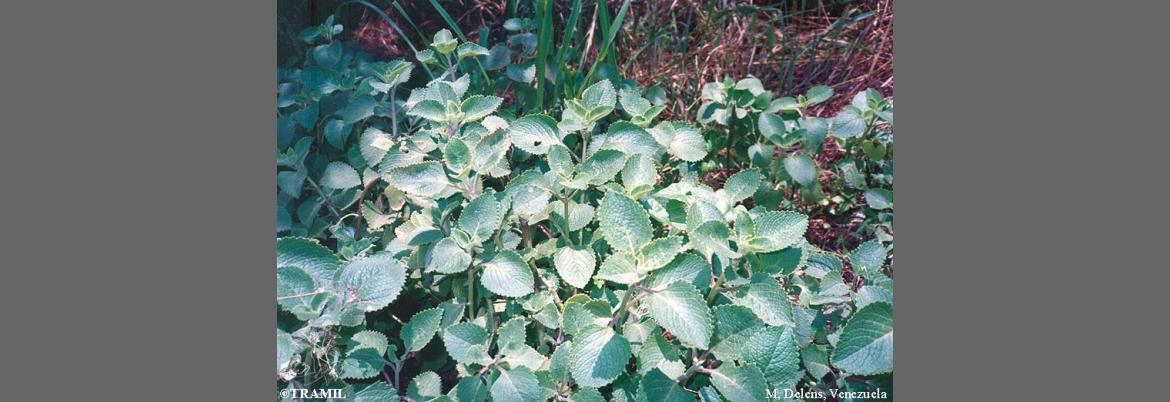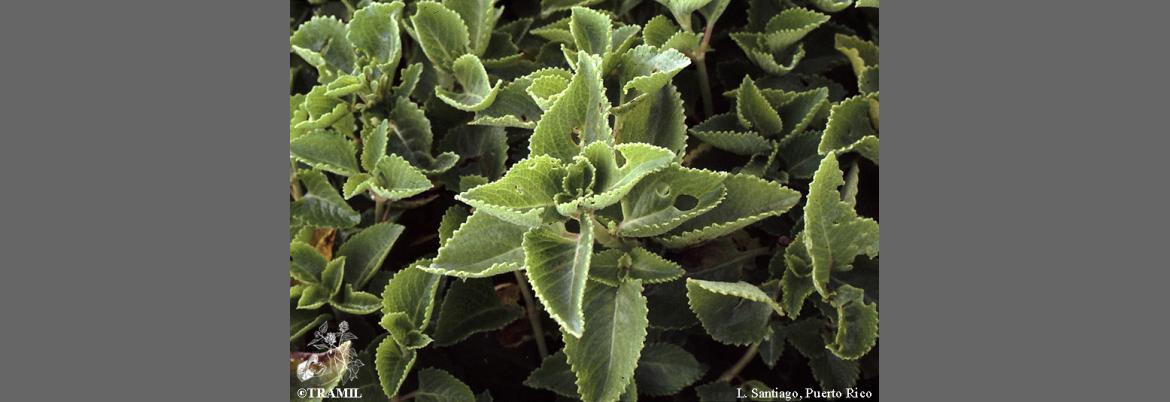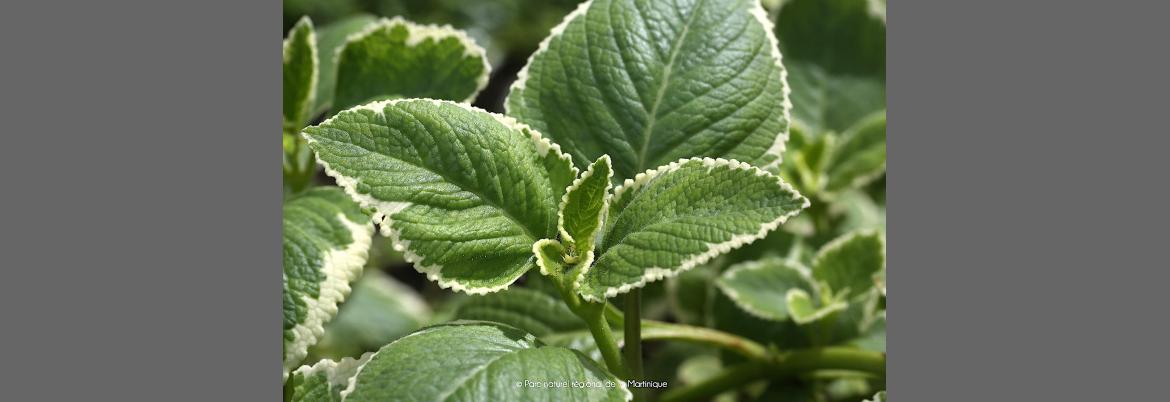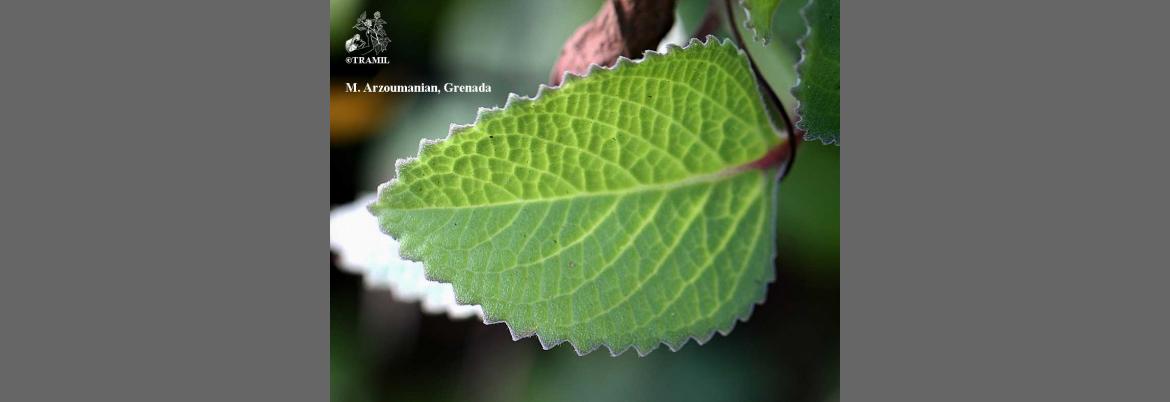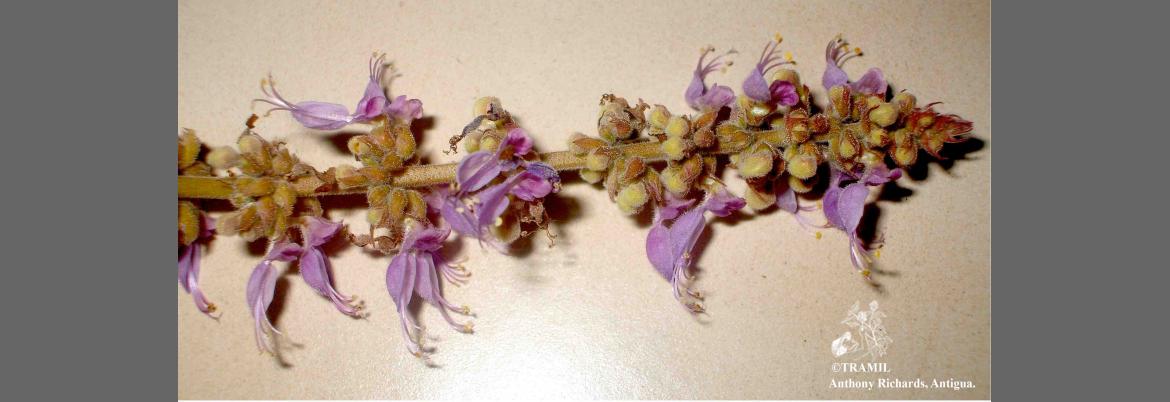1 MENDEZ M, MEDINA ML, DURAN R, 1996 Encuesta TRAMIL. Unidad de recursos naturales, Centro de Investigación Científica de Yucatán CICY, Mérida, México.
2 HAQUE I, 1988 Analysis of volatile constituents of PakistaniColeus aromaticus plant oil by capillary gas chromatography/mass spectrometry. J Chem Soc Pak 10(3):369-371.
3 TIMOR CE, MANZINI ME, FERNANDEZ A, GONZALEZ ML, 1992 Physicochemical assessment of the essential oil from the leaves of Plectranthus amboinicus (Lour) Spreng. growing in Cuba. Rev Cubana Farm 25(1):63-68.
4 BRIESKORN CH, RIEDEL W, 1977 Flavonoids fromColeus amboinicus. Planta Med 31:308.
5 BRIESKORN CH, RIEDEL W, 1977 Triterpene acids fromColeus amboinicus. Arch Pharm (Weinheim) 310(11):910-916.
6 ATAL CK, SRIVASTAVA JB, WALI BK, CHAKRAVARTY RB, DHAWAN BN, ROSTOGI RP, 1978 Screening of Indian plants for biological activity. Part. VIII. Indian J Exp Biol 16(3):330-349.
7 COLLIER WA, VAN DE PIJI L, 1949 The antibiotic actions of plants, especially the higher plants,with results with Indonesian plants. Chron Nat 105:8-22.
8 LLANIO M, PEREZ-SAAD H, FERNANDEZ MD, GARRIGA E, MENENDEZ R, BUZNEGO MT, 1999 Plectranthus amboinicus (Lour.) Spreng. (orégano francés): efecto antimuscarínico y potenciación de la adrenalina. Rev Cubana Planta Med 1(4):29-32.
9 MENENDEZ RA, PAVON V, 1999 Plectranthus amboinicus (Lour.) Spreng. Rev Cubana planta Med 3(3):110-115.
10 BUZNEGO MT, FERNANDEZ MD, LLANIO M, LEON N, ACEVEDO ME, PEREZ-SAAD H, 1999
Perfil neurofarmacológico del Plectranthus amboinicus (Lour.) Spreng. (orégano francés). Potenciación de las estereotipias inducidas por anfetamina. Rev Cubana Planta Med 1(4):15-17.
11 GARCIA J, GARCIA T, MENENDEZ R, BUZNEGO M, 1996 Efecto antioxidante de los extractos fluídos y de flavonoides del Plectranthus amboinicus (Lour.) Spreng. (orégano francés). Rev Cubana Planta Med 1(2):27-30.
12 Solis PN, Olmedo D, Buitrago de Tello RE, Gupta MP, 2000 Estudio fitoquímico y toxicológico de algunas plantas TRAMIL. Informe TRAMIL. Centro de Investigaciones Farmacognósticas de la Flora Panameña CIFLORPAN, Facultad de Farmacia, Universidad de Panamá, Panamá, Panamá.
13 VIZOSO A, RAMOS A, EDREIRA A, BETANCOURT J, DECALO M, 1999 Plectranthus amboinicus (Lour.) Spreng. (orégano francés). Estudio toxicogenético de un extracto fluido y del aceite esencial. Rev Cubana Plant Med 3(2):68-73.
14 ALBORNOZ A, 1993 Medicina Tradicional Herbaria. Caracas, Venezuela: Editorial Instituto Farmacoterápico Latino S.A. p102.
15 GarcIa-GONZÁLEZ M, fallas L.V. 2005 Toxicidad aguda dosis repetida, en ratones, del extracto acuoso (decocción) de las hojas frescas de Plectrantus amboinicus . Informe TRAMIL.PRONAPLAMED. Depto de Fisiología, Escuela de Medicina, Universidad de Costa Rica, San Pedro, Costa Rica.
16 LUCIANO-MONTALVO C, GAVILLAN-SUAREZ J, 2009 Actividades antimicrobianas de partes de plantas con usos significativos en encuestas etnofarmacológicas TRAMIL. Informe TRAMIL, Instituto de Investigaciones Interdisciplinarias, Cayey, Universidad de Puerto Rico.
17 MOREJON Z, LOPEZ M, GARCIA MJ, BOUCOURT E, VICTORIA M, FUENTES V, MORON F, BOULOGNE I, ROBINEAU L, 2009 Encuesta TRAMIL preliminar a grupos de vecinos en los municipios 10 de Octubre, Lisa, Marianao, Habana del Este (Cojímar) en la Ciudad de la Habana. Laboratorio Central de Farmacología, Universidad de Ciencias Médicas de La Habana, Ciudad de La Habana, Cuba.
